Where to go for your first safari? In Africa, several countries offer rich safari programs: Tanzania, Kenya, South Africa, Botswana, Uganda, and others. Which country should you visit? Which national parks to choose?
We’ve curated a list of the best safari destinations to explore in Africa. Learn about the most popular countries, why they stand out, the unique features of each park, the animals you can encounter, the costs, and the best months to embark on your safari adventure.
Best national parks and reserves for your first African safari
Here are the most popular national parks in Africa, according to Altezza Travel:
For each national park, we provide an in-depth look at its distinctive landscapes and diverse wildlife, including where you’re most likely to encounter all members of the Big Five — elephants, lions, leopards, rhinos, and buffalo. We also offer detailed cost estimates, recommend the best times of year to visit, and give a clear sense of how crowded each park can become, ensuring you can plan your safari experience with confidence and ease.
Ngorongoro Crater, Tanzania
One of Africa's most popular safari destinations is Tanzania's Ngorongoro Conservation Area. It is a special protected zone, with the attention focused on the Ngorongoro Crater, an ancient volcano crater covering only 260 km² (100 sq mi). While small compared to larger reserves like Yellowstone or Yosemite, the crater’s natural boundaries create a remarkably diverse ecosystem. The unique feature of the Ngorongoro Crater is its towering walls, which form a giant natural enclosure. Travelers descend into the crater by car, where they can encounter a wide variety of wildlife in a single day.
Landscapes of the Ngorongoro Crater
In Ngorongoro, the highlight is the main caldera — a vast basin enclosed by the towering walls of a long-collapsed volcanic crater. The view from above is breathtaking: endless expanses bordered by 600-meter-high (1,968 ft) walls, the shimmering surface of Lake Magadi below, a self-sustaining ecosystem, and animals roaming freely within. As you descend into the crater, you’re immersed in this natural "arena," amplifying the awe-inspiring experience. Be warned: you may find it hard to leave.
Animals of the Ngorongoro Crater
Ngorongoro is considered one of the best places in Africa to see the Big Five. The area is home to around 25,000 animals year-round, with the highest density of elephants, buffaloes, and lions in all of Africa. While it’s possible to spot many animals in a single day, rhinoceroses and leopards can be more elusive, so many visitors opt to stay for several days. To spot leopards, you may need to venture outside the main crater. However, Ngorongoro offers a unique opportunity to see animals you won’t encounter anywhere else on the continent. Note that giraffes cannot descend into the crater, as its steep slopes are too challenging for them.
How much does it cost to visit Ngorongoro?
Entry to Ngorongoro costs approximately $70 per person. Additionally, descending into the Ngorongoro Crater requires a separate fee of $250 per safari vehicle. The overall cost of a safari typically ranges from $400 to $1,000 per day per person, which includes expenses for vehicle rental and a professional guide.

Best time to visit Ngorongoro
The Ngorongoro Crater offers excellent wildlife viewing year-round.
However, the dry season from June to October is particularly favorable, as the reduced grass cover makes animals easier to spot. This period is especially popular due to the mass migration of antelopes in the northern Serengeti. The Christmas holiday season also sees high demand.
In March and April, fewer people visit Ngorongoro due to the rainy season, although the rains are not daily. These months offer great opportunities for wildlife observation, with fewer vehicles and visitors in the crater. From November to May, the vegetation in the crater is especially lush and vibrant, creating a beautiful backdrop for your safari.
It’s important to note that evenings in Ngorongoro, particularly near the crater's edge where many hotels are located, can be quite cold. The crater rim sits at an altitude of 2,200–2,400 meters (7,218–7,874 ft) above sea level, so it's advisable to pack warm clothing for your visit.
Amboseli National Park, Kenya
One of Africa’s most iconic safari scenes is elephants crossing the savannah with Mount Kilimanjaro rising in the background. This unforgettable view comes from Amboseli National Park in southern Kenya.
Landscapes Amboseli National Park
Amboseli lies north of Mount Kilimanjaro, whose summit is often covered with snow. This makes a great impression — snow in Africa is rare, and the equator is just a stone's throw away. The park features vast plains interspersed with shimmering lakes, creating a unique combination of terrains that make it a favorite among photographers and filmmakers year-round. The mountain Kilimanjaro itself is located on the territory of neighboring Tanzania, but since it stands close to the border with Kenya, it is well visible from Amboseli Park.
Animals of the Amboseli National Park
Amboseli is renowned for its elephants, particularly large herds that include individuals with massive tusks known as Super Tuskers. It hosts the world’s longest-running elephant research project. While you can see many African animals in the park, all members of the Big Five are present except rhinoceroses.
How much does it cost to visit Amboseli National Park?
The entrance fee is $60 per person per day. A one-day safari, including vehicle and guide, typically costs between $230 and $500 per person.
Best time to visit Amboseli National Park
The park is busiest during the dry seasons from June to October and December to January, as wildlife gathers around water sources, making sightings easier. If you prefer fewer crowds, March is a quieter time to visit, although occasional rains may occur. Most guides recommend avoiding April and May due to prolonged rains.
Kruger National Park, South Africa
Kruger Park is the largest and most famous reserve in South Africa. It is very visually diverse, so you won't get bored even after a few days. The park has a well-developed tourist infrastructure: many hotels, campsites, and lodges. There are roads and equipped trails for walking safaris. All this attracts a huge number of visitors.
Landscapes of Kruger National Park
On twenty thousand square kilometers (7,700 sq mi), there are mountainous areas, forested hills, open savannahs, and river valleys. Such landscape diversity creates a unique mixed ecosystem, allowing you to see many plants and animals native to the southern African continent. Although Kruger Park is in South Africa, it borders neighboring Mozambique and Zimbabwe, making it convenient for planning trips across several African countries.
Animals of Kruger National Park
Kruger is home to about 150 species of mammals, making it an excellent location to spot almost all African animals. The Big Five can be seen here, and the park is widely regarded as one of the best places for observing them. Kruger’s well-positioned viewing areas and nearly a century of safari expertise add to its appeal — the park has been welcoming visitors since 1927.
How much does it cost to visit Kruger National Park?
Entry fees are around $30 per person per day, with one-day group tours ranging from $110 to $385 per person.
Best time to visit Kruger National Park
The park is South Africa's most popular safari destination and arguably one of the most iconic in all of Africa. In recent years, it has attracted over 1.5 million visitors annually, with the peak season falling between June and August. The southern part of the park, being more developed and accessible, tends to be significantly more crowded during this time. If you prefer a quieter and more serene experience, consider exploring the northern regions, where visitor numbers are much lower.
The best time to visit Kruger National Park is during the dry season (May to September). During this period, animals gather around water bodies, making them easier to observe. The rainy season (December to March) sees animals dispersing across different parts of the park due to the abundance of water, so finding them can take more time.
Moremi Game Reserve, Okavango Delta, Botswana
In Botswana, the Okavango River creates an incredibly picturesque landscape. Upon reaching a tectonic basin, the river fans out across the plains, forming a network of wetlands. Eventually, all the water evaporates without flowing into any other bodies of water or reaching the ocean. This phenomenon is entirely unique on our planet and represents a natural wonder of rare beauty.
The delta doesn’t fall under the jurisdiction of a single protected area but is instead a mosaic of nearly 20 conservation zones. Approximately 40% of the Okavango Delta lies within the boundaries of the Moremi Game Reserve.
Landscapes of the Moremi Game Reserve
Moremi Game Reserve encompasses the northwestern portion of the delta, offering a variety of terrains, including floodplains, swamps, open savannas, and dense forests. Thanks to this diversity, visitors can enjoy not only classic game drives but also walking safaris and even water safaris. Canoe safaris in the lagoon are a truly unique way to experience the area’s natural beauty.
Animals of the Moremi Game Reserve
In addition to frequent encounters with hippos and crocodiles, visitors can observe giraffes, numerous species of antelope, big cats, and birds. All five members of the "Big Five" can be spotted here, including both . The Okavango Delta also supports a stable population of cheetahs. Moreover, dozens of fish species inhabit its waters. Botswana, as a whole, is known for having the world’s largest elephant population, with approximately 130,000 elephants residing in the country. Another reserve particularly known for its massive elephant population is Chobe National Park.
How much does it cost to visit Moremi Game Reserve?
Entry to Moremi Game Reserve costs approximately $20 USD. A one-day safari, including transport and guide services, ranges from $230 to $420 per person.
Best Time to visit the Okavango Delta in Moremi
Moremi is not as crowded as the popular parks in Kenya, Tanzania, or South Africa. Safaris here tend to be more tranquil, and private tours are available. The reserve limits the number of visitors at any given time, with the busiest period occurring during the high season from July to October.
These months are the best time to visit Moremi, as the dry season draws animals to water sources, making them easier to find. The rainy season, from January to March, floods the delta so extensively that water safaris often become the only option. This reduces the chances of spotting many animals as they spread out across the vast area. Some hotels even close due to rising water levels. However, the rainy season is ideal for canoe excursions.
Etosha National Park, Namibia
Etosha National Park in Namibia attracts many travelers with its unique landscape. Its key feature is the vast white salt pan covering nearly a quarter of the park. This pan is so large it can be seen from space. Essentially a desert, Etosha experiences dramatic temperature fluctuations between day and night. For most of the year, the ground remains dry and cracked, but during the rainy season, a shallow lake forms, drawing flamingos, pelicans, and other birds. Despite its arid character, Etosha is home to a wide variety of wildlife.
Landscapes of the Etosha National Park
In addition to the enormous salt pan, Etosha features dry savannas, sparse woodlands, permanent waterholes, and dolomite hills. Those hills are home to the smallest species of zebra — the mountain zebra. The park’s arid environment supports resilient mopane trees, but much of Etosha is savanna covered in thorny shrubs.
Wildlife of the Etosha National Park
Etosha boasts a high concentration of wildlife, with over 100 species of mammals. The park is particularly important for the conservation of black rhinos. However, visitors cannot see all members of the "Big Five," as buffaloes became extinct in the area by the mid-20th century. Wild dogs also disappeared around the same time. Interestingly, the number of fish species varies significantly depending on the season: during the dry season, only one species is present, but during floods, this number increases to around 50.
How much does it cost to visit Etosha National Park?
Park entry costs less than $10 USD per person. While single-day safaris are less common, a few shorter tours lasting several hours are available for up to $150 USD per person. More popular are three-day safaris, which range from $500 to $1,500 USD.
Best time to visit Etosha National Park
Etosha is a relatively well-visited park, but its vast territory prevents it from feeling overcrowded. The high season, from July to October, sees the most visitors.
The dry season (June to October) is the best time for wildlife observation, as animals gather at waterholes. In the rainy season (November to April), animals disperse throughout the park, and the growth of trees and shrubs makes them harder to spot. However, during this time, the salt pan fills with water, transforming into a picturesque lake teeming with waterbirds.
Visitors are advised to avoid Etosha between December and March.
Serengeti National Park, Tanzania
No list of Africa’s best parks would be complete without the Serengeti, one of East Africa’s most famous destinations. Its global renown grew in the mid-20th century thanks to conservationist Bernhard Grzimek, who studied the seasonal migration patterns of hoofed animals across vast territories east of Lake Victoria. This phenomenon, now known as the Great Migration, is the Serengeti’s main draw, attracting countless visitors annually.
Safari in Tanzania’s Serengeti and Ngorongoro with Altezza Travel

Landscapes of the Serengeti National Park
Serengeti is primarily plains. In the northern part, they are intersected by the Grumeti and Mara Rivers, which become the main attraction points for travelers during animal crossings. In the north, there are hills, while the western and southern parts of the park add variety to the plain landscape with forests and sparse woodlands. One of the most memorable trips here is a balloon flight over the plains.
Animals in the Serengeti National Park
The key event in Serengeti is the never-ending movement of animals in the yearly cycle of the Great Migration. This involves the clockwise movement of over 1.5 million wildebeest, hundreds of thousands of Thomson’s gazelles, zebras, and other antelopes. They follow the rains that ensure an abundance of juicy grass. Serengeti also has the largest lion population in Africa. Additionally, all other members of the Big Five can be seen here.
How much does it cost to visit the Serengeti National Park?
The park’s entry fee is $70 USD per person. A one-day safari costs between $480 and $660 USD.
Best time to visit the Serengeti National Park
You can visit the Serengeti year-round. Most travelers aim to witness the Great Migration. Massive herds of wildebeest crossing rivers and being hunted by predators are among the most dramatic scenes on safari. In the Serengeti, this is relevant approximately from January to October. It is important to note that the Serengeti is one of Africa's most popular parks, attracting several hundred thousand visitors annually. Therefore, it's crucial not only to know where and when there are particularly many animals in the park but also to understand where crowds of other travelers will be and how to avoid them.
The year begins with the birth of numerous antelopes: in January and February, the Ndutu area transforms into a giant calving ground for wildebeest. In June and July, hundreds of thousands of wildebeest move north through the Western Corridor, following the rains and fresh grass. The famous crossings of the Mara River by the antelopes occur in August and September.
Most travelers are aware of this schedule, so there are many other observers, which can spoil the experience. We recommend not following the crowd but moving to less crowded areas of the park away from the central events of the Great Migration. For example, while everyone is heading to central Seronera, head to the Western Corridor, where there will be fewer safari vehicles.
The rainiest months are March and April, although December and January also see a lot of precipitation, leading to flooding in the northern regions of the Serengeti. Always check the current weather forecast. Rain can also occur in May, although usually less so. By the way, many hotels offer discounts specifically for April and May.
Rain is not always a problem. The showers are often short, and you can go on safari every day. Moreover, precipitation from November to May guarantees splendid green landscapes in the Serengeti.
The driest and most comfortable period is from June to October. But remember, this is also the coldest time of the year in Tanzania, meaning mornings and evenings can be chilly. The average elevation of the Serengeti plains is 1,400 meters (4,600 ft) above sea level. Bring sweaters and jackets.
Maasai Mara National Park, Kenya
Maasai Mara (also spelled Masai Mara) is one of Kenya's most popular reserves, bordering Tanzania's Serengeti. The two areas are united by the Great Wildebeest Migration. Animals do not recognize boundaries and move across the shared ecosystem that includes both protected areas. The reserve is named after the Maasai, a nomadic tribe traditionally living in these lands. Safari in Maasai Mara is captivating due to its classic savannah landscapes and diverse wildlife.
Landscapes of the Maasai Mara National Park
The Maasai Mara features expansive plains interspersed with small forested areas along its rivers. From the center of the reserve, rolling hills can be seen on the horizon. The landscape is divided by the Mara River and its tributaries, the Sand and Talek Rivers. The plains between these waterways are prime spots for wildlife observation, where visitors can witness dramatic scenes of lions and cheetahs.
Animals of the Maasai Mara National Park
The Maasai Mara is home to an impressive abundance of wildlife, with wildebeest making up a significant portion of the population. Around 100,000 reside in the reserve, not including the hundreds of thousands of migrating antelopes. The reserve also supports a variety of other animals, including a substantial population of black rhinos, which are effectively protected from poachers. All of the Big Five are found here, with Maasai Mara particularly famous for its large lion population. In addition, there are many spotted hyenas and cheetahs. Every year, antelopes and zebras migrate from the Serengeti to the Maasai Mara, where they spend two to three months. This mass migration draws countless visitors eager to witness the dramatic spectacle of millions of hooves crossing the local rivers.
For a detailed comparison of Masai Mara and the Serengeti, check out our recent article.
How much does it cost to visit the Maasai Mara National Park?
As of 2024, the entrance fee to Maasai Mara National Park is $200 per person. The administration has sharply increased the price to reduce the pressure on the protected area, which is experiencing significant tourism strain. There is a 12-hour rule, allowing stays from 6 a.m. to 6 p.m. Exceeding this limit will require an additional fee. The minimum cost of a one-day safari in Maasai Mara ranges from $350 to $500.
Best time to visit Maasai Mara National Park
The best time to visit Maasai Mara depends on the type of experience you're seeking. While the reserve attracts several hundred thousand visitors annually, the most popular time is during the dramatic migration of antelopes across the Mara River, typically in August and September. However, this period also sees the highest visitor numbers, meaning the park can feel crowded, and the safari experience may be less comfortable.
From a weather perspective, the dry season from June to October is ideal. During these months, animals are more likely to gather around water sources, making them easier to observe. The Mara River crossings, a major highlight, occur from August to October, while the birthing season for many species takes place from December to February, drawing many wildlife enthusiasts.
Rainfall occurs in March, April, November, and December, with occasional heavy showers that can wash out roads in some areas.
Queen Elizabeth National Park, Uganda
Queen Elizabeth National Park is Uganda’s most visited park and boasts the highest number of mammal species compared to other national parks in the country. Situated in the southwest, the park lies between Lake George and Lake Edward, both part of the Great African Lakes system. The proximity to these water bodies enhances the park's dramatic landscapes and offers a unique opportunity for boat safaris, adding an exciting dimension to the wildlife experience.
Landscapes of the Queen Elizabeth National Park
Queen Elizabeth National Park offers a stunning variety of landscapes, from open savannas and tropical forests to expansive water bodies, allowing you to experience Africa’s diverse natural beauty. Boat cruises along the Kazinga Channel offer the chance to spot crocodiles, hippos, and a wide range of waterfowl. Adjacent to the park lies the Kiyambura Gorge, known for its high concentration of primates, particularly chimpanzees. The vast Maramagambo Forest also plays a key role in shaping the park’s ecosystem and landscape, home to numerous bird species and monkeys.
Animals of the Queen Elizabeth National Park
The park is rich in biodiversity, hosting nearly 100 mammal species and around 600 bird species. While the fauna suffered during the Ugandan-Tanzanian war in the late 1970s, it has since recovered, and visitors can now enjoy abundant wildlife. All of the Big Five are present, except for rhinos, which were sadly wiped out by poaching in the 1980s. The Queen Elizabeth National Park is home to one of the African lion populations known to exhibit tree-climbing behavior. It is an unusual trait for male lions, typically seen only in lionesses. Many visitors come specifically to see these tree-climbing lions, a unique draw for the park.
How much does it cost to visit Queen Elizabeth National Park?
Entrance to the park costs $40. Safaris in Queen Elizabeth National Park are not very expensive. A one-day safari will cost approximately $200.
Best time to visit Queen Elizabeth National Park
The park is particularly popular from June to September. The driest and most comfortable weather can be experienced in June–July and partially in January–February. Water cruises along the Kazinga Channel are the highlight of many visitors’ trips, so they tend to be the most crowded activities. For a more serene experience, consider visiting the southern Ishasha sector, where the number of travelers is lower.
The dry months are the best for animal sightings in the park, as animals are drawn to water sources, making them easier to observe. From November to April, the rainy season begins, which can disrupt travel plans. April to May and September to November tend to be the wettest months. However, this is an excellent time for birdwatching, especially for spotting migrating species. The lush landscapes during the rainy season add to the park's picturesque beauty.
Volcanoes National Park, Rwanda — Trekking to Mountain Gorillas
The Virunga Volcano Range spans three countries in Eastern Africa: Uganda, Rwanda, and the Democratic Republic of Congo. Each country has a protected area within this region, forming a single, critical ecosystem. The area is famous for being one of the last places in the world where the endangered mountain gorillas can be found.
The most popular and accessible parks for gorilla trekking are Uganda's Mgahinga Gorilla National Park and Rwanda's Volcanoes National Park. Virunga National Park in the D.R. Congo, though part of this unique ecosystem, is less developed and currently unsafe due to poaching and periodic attacks by armed rebel groups that have targeted park rangers. Here, we focus on Rwanda’s Volcanoes National Park, which holds particular significance as the first national park established in Africa in 1925.
Landscapes of the Volcanoes National Park
The park is home to five of the eight Virunga volcanoes. These volcanoes are covered by dense tropical forests, creating a unique natural environment. In addition to the forested slopes, the park includes meadows, swamps, and lakes. However, the main territory is dominated by mountains.
Animals of the Volcanoes National Park
The park is home to a variety of animals, including antelopes, buffalo, hyenas, and over 150 species of birds. However, its most famous residents are the mountain gorillas. Originally established to protect these gorillas, Volcanoes National Park remains a popular destination for travelers hoping to see them. From the 1960s to the 1980s, primatologist conducted groundbreaking studies on gorillas here under the guidance of Louis Leakey. While it’s difficult to estimate the exact number of gorillas in this protected area, as they reside on the territory of three adjacent national parks, there are over 600 mountain gorillas in the region. These gorillas are considered endangered.
How much does it cost to visit Volcanoes National Park?
A one-day gorilla trekking tour in the park costs between $1,650 and $2,500 per person. If lower-priced tours are available, they likely do not include gorilla trekking and may focus on simpler forest excursions or golden monkey trekking.
Best time for gorilla trekking in Volcanoes National Park
Although the park is not usually overcrowded, it is a popular destination for those seeking a unique safari experience. Gorilla trekking is possible year-round, but during the rainy season, trails can become muddy and difficult to navigate. The heaviest rains occur in March and April, with lighter rains in October and November. The peak dry season, from June to August, is the most popular time to visit, though September and January–February offer a good balance between wet and dry conditions.
South Luangwa National Park, Zambia
South Luangwa National Park is one of the largest in southern Africa. It attracts travelers with its diverse ecosystems and plant species. Additionally, Zambia is one of the two countries where the famous , the second being Zimbabwe. South Luangwa is considered one of the most visited parks on the continent, and it rounds out our list of the top safari destinations in Africa.
Landscapes of the South Luangwa National Park
The park offers a variety of landscapes, from forested savannas and open meadows to dense tropical forests and river valleys with floodplain lakes, which are popular with hippos. South Luangwa stretches along the Luangwa River, a tributary of the Zambezi, which sustains the region's rich biodiversity.
Animals of the South Luangwa National Park
The concentration of animals near the Luangwa River is one of the highest in Africa, especially crocodiles and hippos. The Luangwa Valley is renowned for having the highest density of hippos on the continent. All of the Big Five animals, except rhinos (which were hunted to extinction by poachers), can be found here. South Luangwa is also famous for its walking safaris.
How much does it cost to visit the South Luangwa National Park?
The entry fee is $25 per person. Due to the relatively low cost, one-day safaris are not very popular, and most safaris are organized for a duration of at least four days. Budget 4-day safaris start at under $1,000, while premium tours can cost up to $3,300 for the same length.
Best time to visit South Luangwa National Park
This park is quite popular in Zambia, with peak visitation occurring during the dry season from July to October. During this period, animals gather around the rivers, making them easier to spot. However, the park remains less crowded compared to other renowned safari destinations such as Tanzania's Serengeti and Ngorongoro Crater, Kenya's Maasai Mara and Amboseli, or South Africa's Kruger Park. This allows you to enjoy a more secluded safari experience.
The best time to visit is from April to August when temperatures are more moderate than closer to October. The rainy season spans from October to March, bringing not only heat but also very humid conditions. Some roads may become impassable, and many accommodations close from December to March, so it’s important to check availability in advance.
Which country in Africa has the best safari for first-timers?
In all three countries, vast natural areas are protected, tourist infrastructure is well developed, and it’s possible to travel safely and comfortably. You can also choose from tours that visit multiple African safari parks in one trip.
These three countries — Tanzania, Kenya, and South Africa — are constantly nominated for the World Travel Awards as leading African destinations. Since 1996, they have taken turns earning accolades in this category.
Why Tanzania?
Over one-third of the country’s territory is designated as national parks, reserves, or other special conservation areas. Natural Wonders of Africa are located in or occur within Tanzania’s borders: Mount Kilimanjaro, the Great Migration in the Serengeti, the Ngorongoro Crater, and the source of the Nile River.
Because Tanzania lies close to the equator, the weather remains pleasantly warm year-round. The commonly cited exceptions are the rainy months of April, May, and November. But from our experience, we know that May is a wonderful time to travel in Tanzania. This month offers fewer crowds, and though rain is possible, it rarely disrupts travel plans.
The people of Tanzania are very friendly and helpful. You feel calm and safe here even far from large cities. English is widely spoken, especially in the tourism sector.
Additionally, the country’s north offers quieter destinations like Mkomazi National Park, Lake Manyara, Saadani, and Rubondo Island National Park. In southern Tanzania, you can explore national parks like Nyerere, Udzungwa, and Ruaha. To the west, near Lake Tanganyika, are the hidden gems of Gombe Stream and Mahale Mountains NPs, both ideal for observing chimpanzees.
Moreover, Tanzania offers superb beach vacations on Zanzibar Island in the Indian Ocean. Additionally, the country has a well-developed mountaineering industry, with tours up Mount Kilimanjaro — Africa’s highest peak — leading the way. Tanzania’s numerous industry awards confirm its status as a welcoming host for travelers from around the globe.
Why Kenya?
Kenya offers diverse landscapes, numerous national parks, and smaller reserves. These can be combined into convenient tours to several nearby locations. The country has excellent transportation links, and its tourist infrastructure has been developing for more than a century — starting from the days when safaris were recreational hunts for wealthy gentlemen. Today, many natural areas are government-protected and open to visitors.
Kenya gives you the chance to see the Big Five animals in many parks; here, it won’t be something rare. Even rhinos, both white and black, are considered common enough because they are successfully protected from poachers. Even Nairobi National Park, located next to the country’s capital in the center, has achieved this.
As in Tanzania, a Kenyan safari can be paired with a beach vacation on the Indian Ocean or mountain expeditions, for example to Mount Kenya. Thanks to its location near the equator, Kenya is suitable for tourism almost all year round. For help choosing between Kenya and Tanzania, see our comparison guide.
Why South Africa?
The Republic of South Africa is popular among travelers for several reasons:
- A well-developed network of good roads
- Rich natural environments with numerous national parks and private reserves
- Surfing, diving, and other water activities—South Africa borders both the Indian and Atlantic Oceans
- Comprehensive tourist infrastructure, with secure lodges and camps for overnight stays
- A wide variety of animals, including the African Big Five
- The ease of traveling independently
Many choose South Africa as their first African safari destination precisely because of that last point. Here, you can rent a car and drive around the country to explore its national parks.
Large cities in South Africa are generally considered the least safe, and some areas are not recommended for visitors. The country has high crime rates, including break-ins, armed robberies, theft, and carjackings. Travelers must take safety precautions.
A modern nation with breathtaking landscapes, it attracts many first-timers. The world-famous Garden Route is a scenic drive along the ocean, passing through evergreen forests, lagoons, beaches, mountain passes, and charming coastal towns. Travelers often break up the journey with short safari stops.
What should you ultimately choose as your first safari destination?
We recommend starting your journey in Tanzania if you're passionate about wildlife, eager to explore off-the-beaten-path destinations, and want to experience Africa in its unspoiled beauty. With its breathtaking landscapes and diverse ecosystems, Tanzania truly has it all. After extensive travel across Africa, we chose to call Tanzania home. The team at Altezza Travel is made up of individuals who are deeply passionate about this incredible country.
If you choose to start your African adventure with a Tanzanian safari, get in touch with us. We offer a range of exciting safari programs, from quick tours of the most popular spots to exclusive luxury safari itineraries featuring world-class accommodations and private excursions. Your unforgettable safari awaits!
All content on Altezza Travel is created with expert insights and thorough research, in line with our Editorial Policy.
Want to know more about Tanzania adventures?
Get in touch with our team! We've explored all the top destinations across Tanzania. Our Kilimanjaro-based adventure consultants are ready to share tips and help you plan your unforgettable journey.
















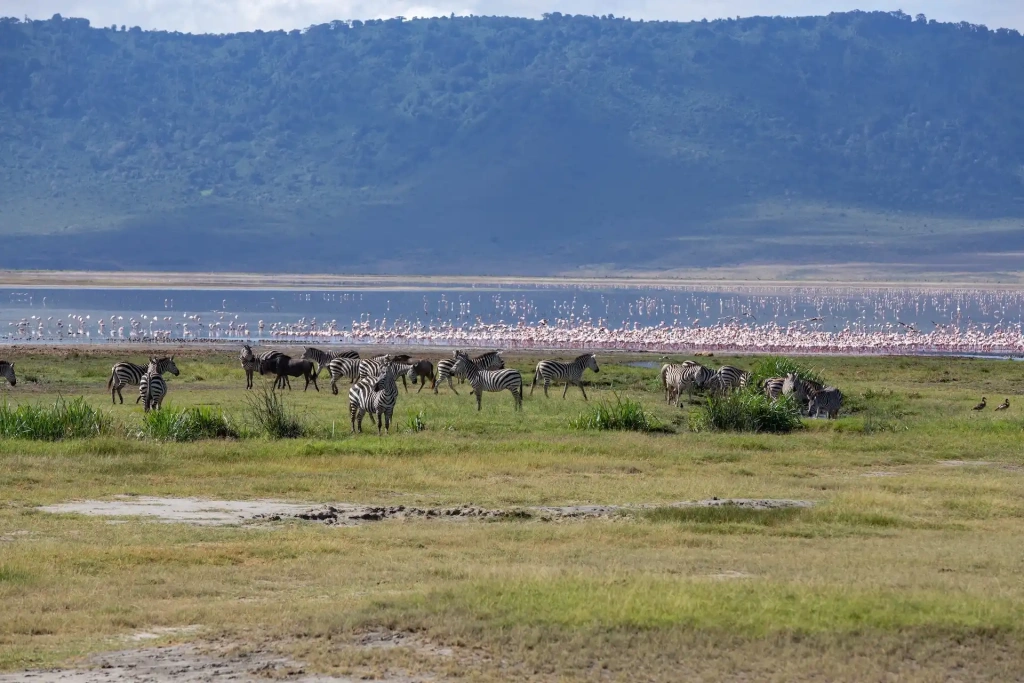



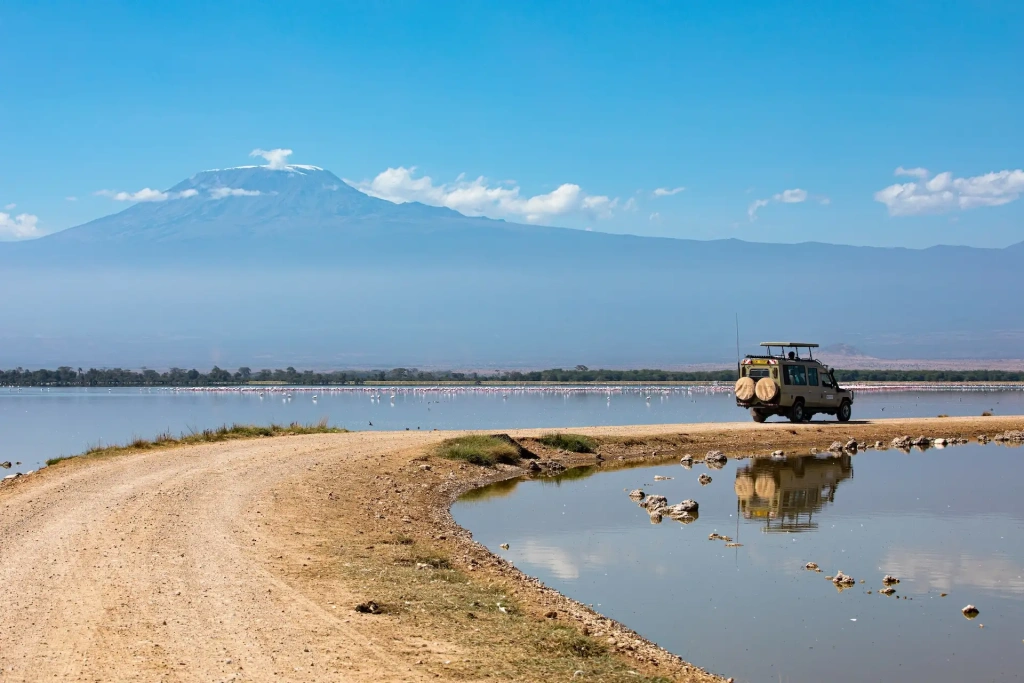
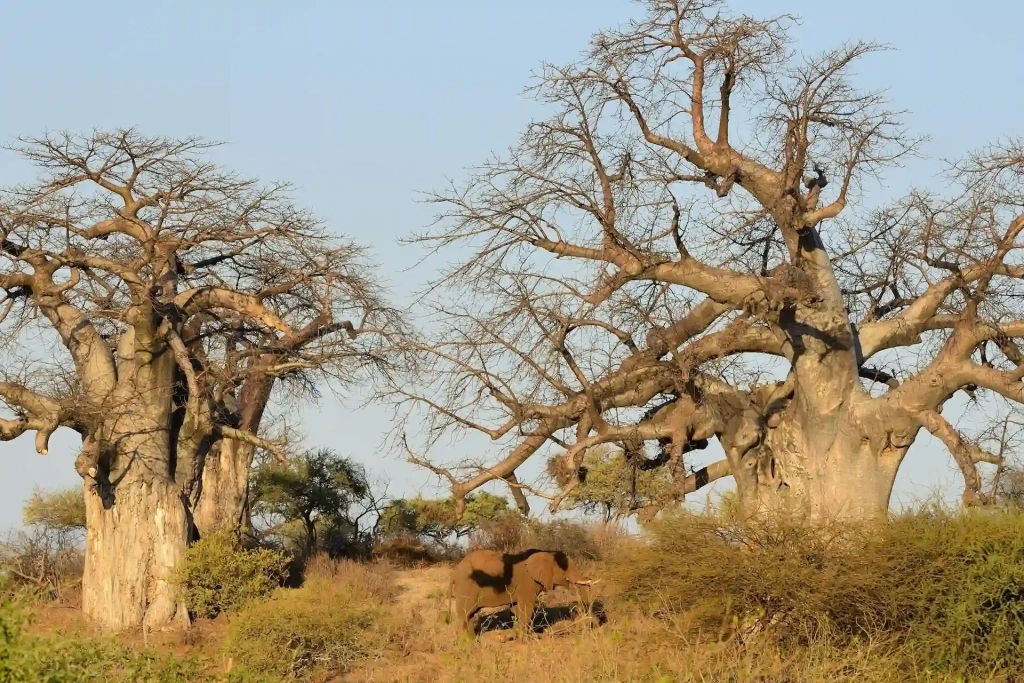

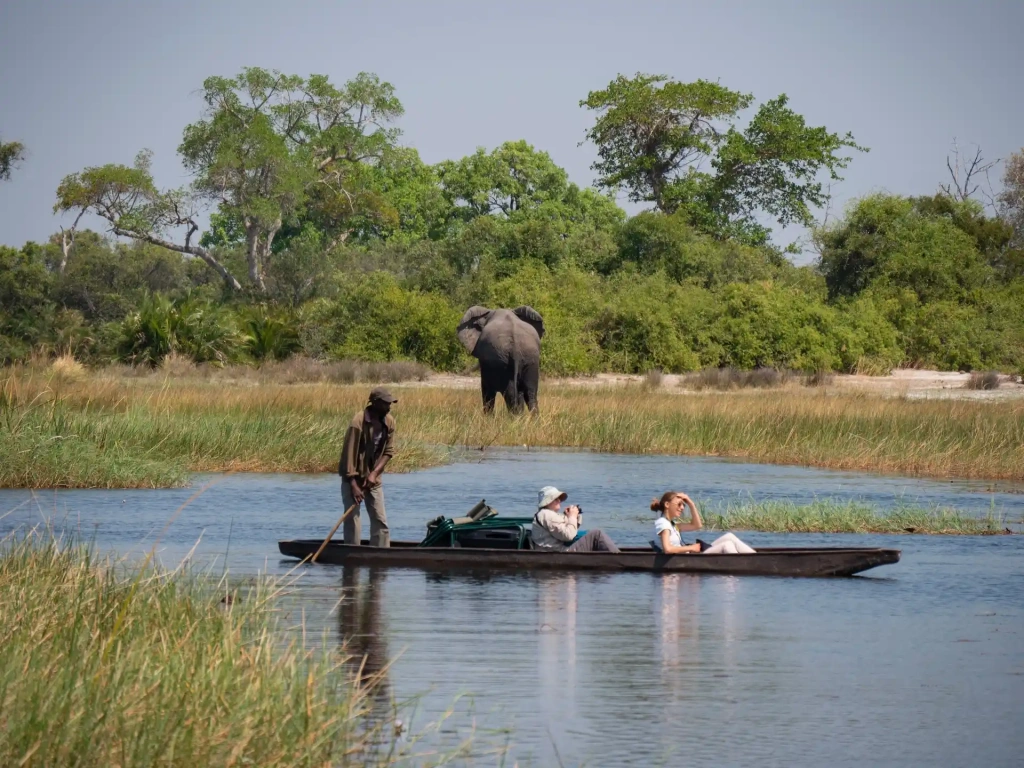

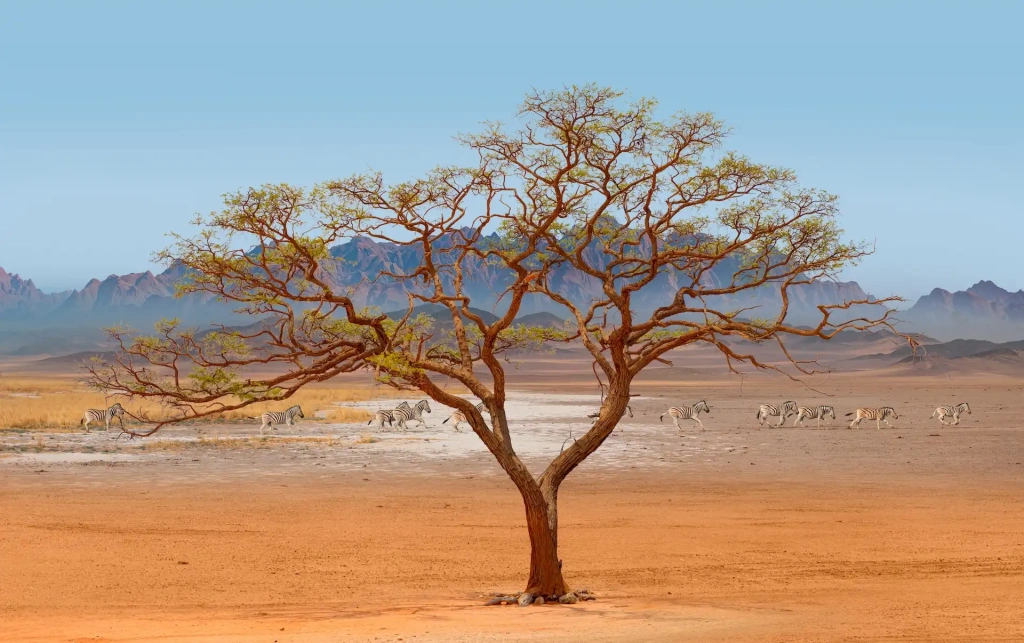



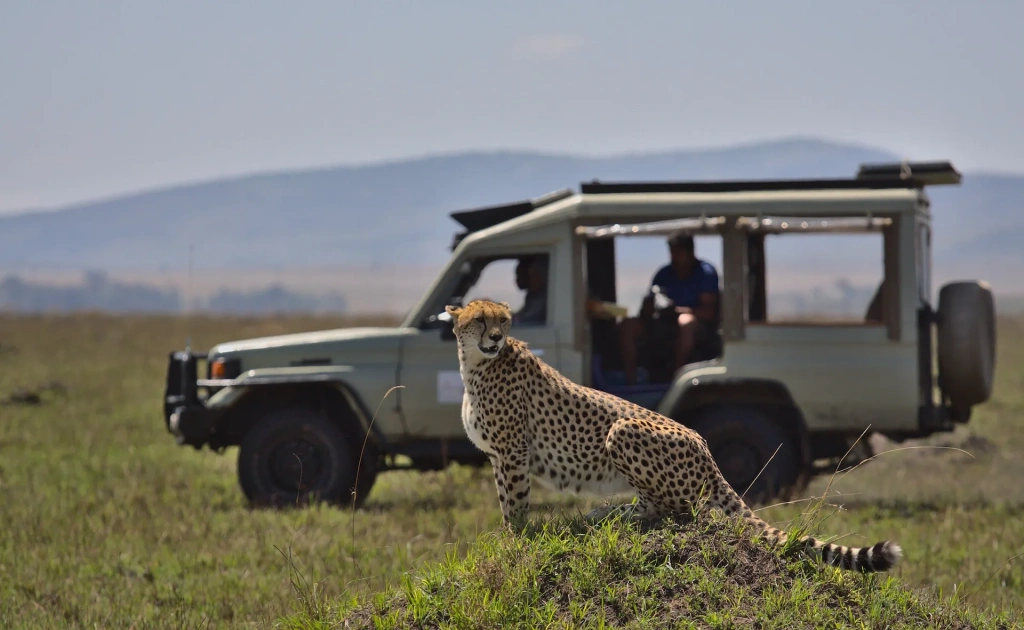


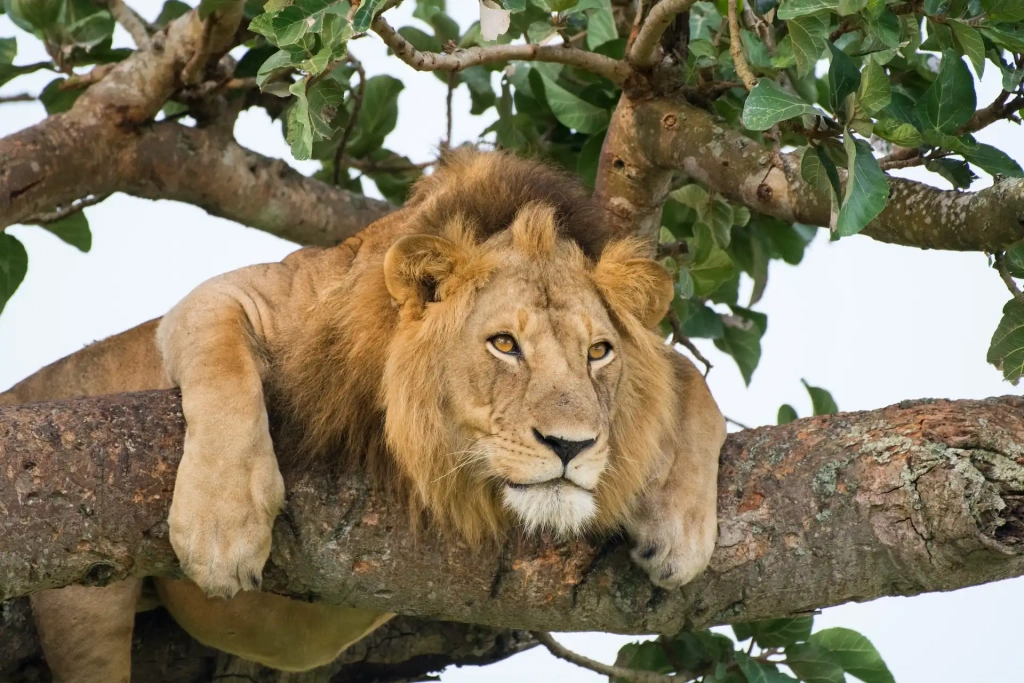

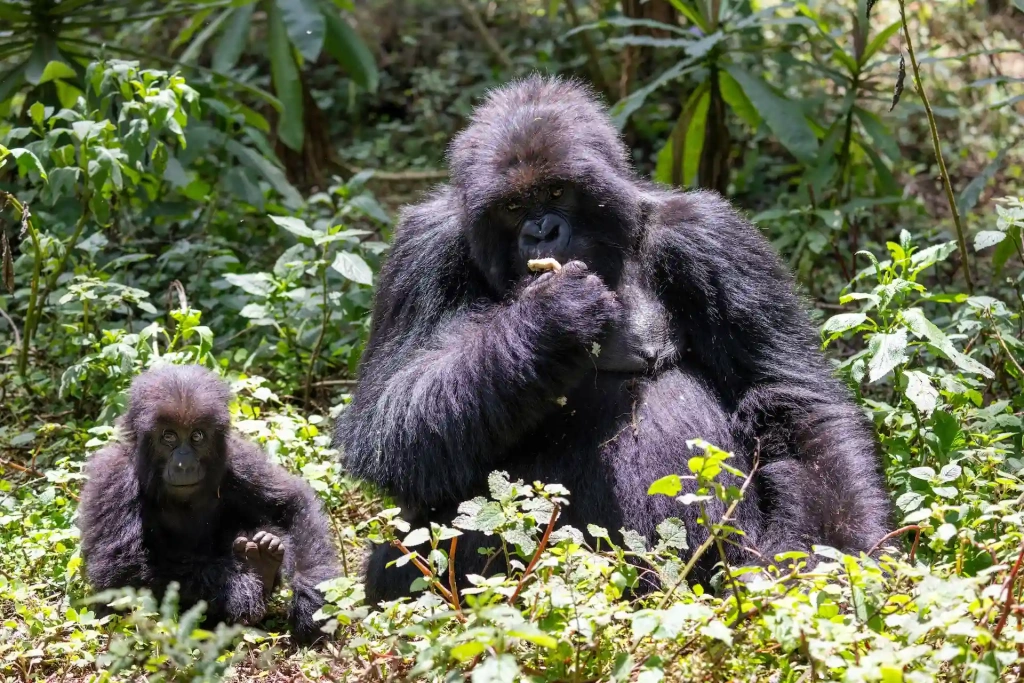
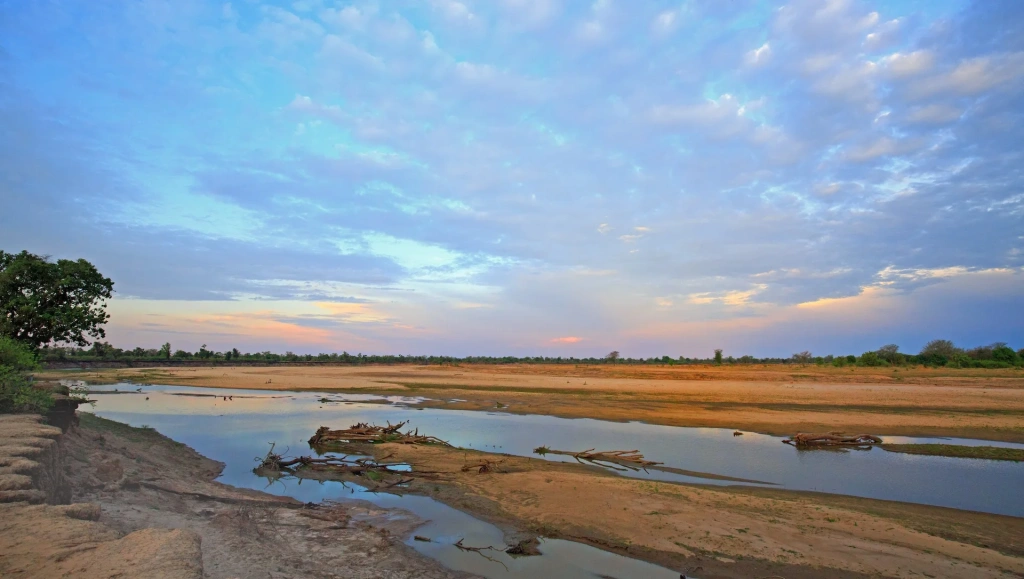
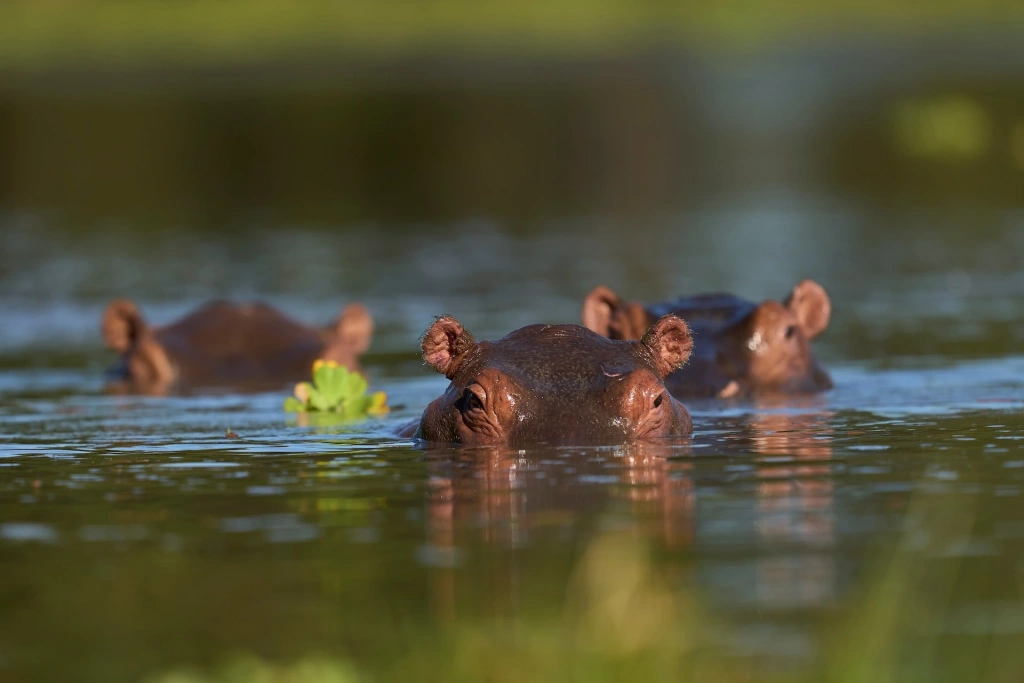
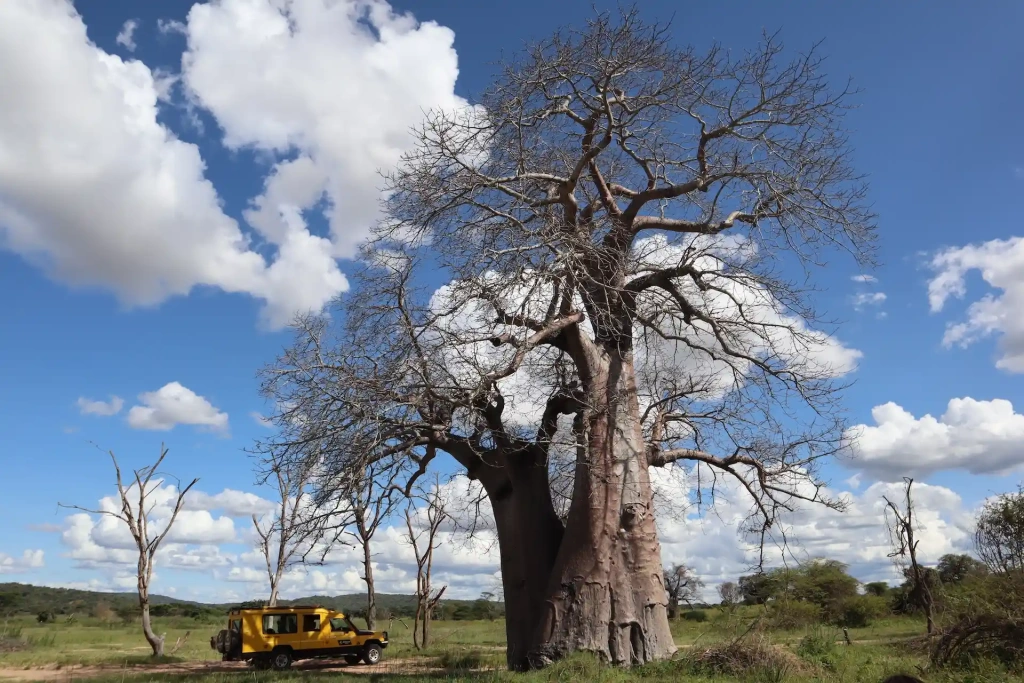
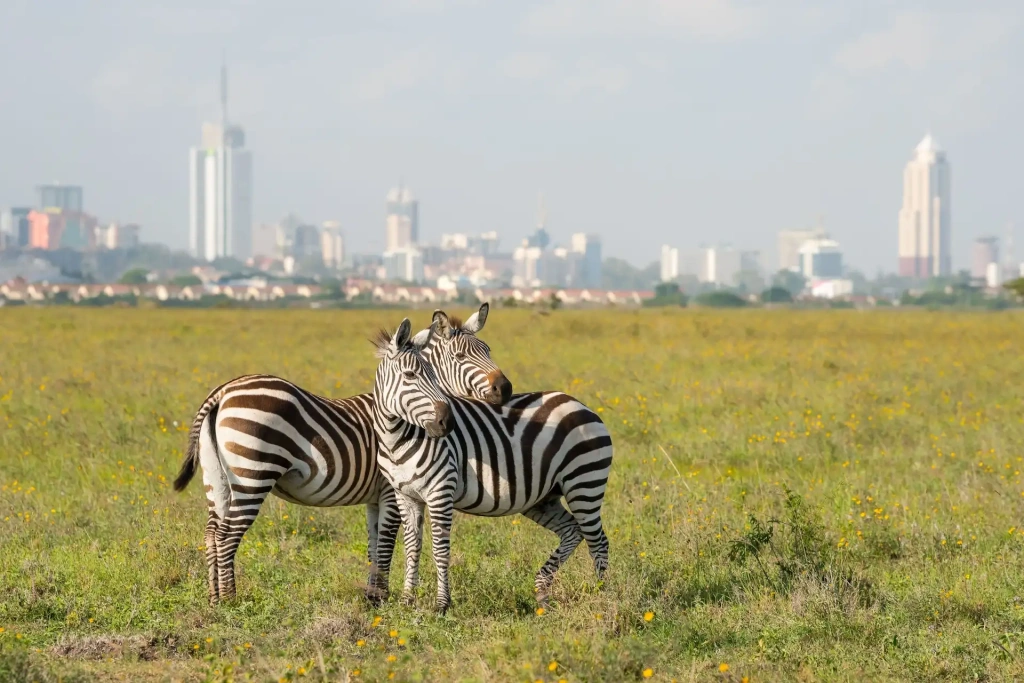

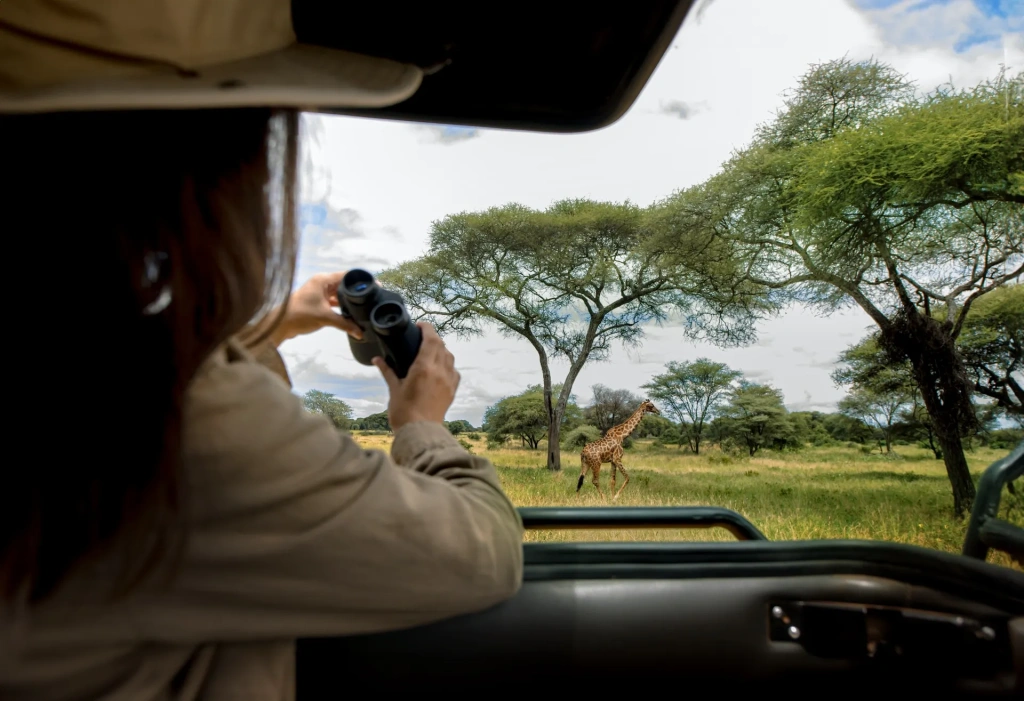

You can visit anytime from June to October if you’re looking for guaranteed dry weather and don’t mind the seasonal tourist peaks. In that case, we recommend planning your tour 12-16 months in advance. If you prefer a quieter time with fewer crowds and don’t mind a little adventure, May is a great month for a more relaxed, off-the-beaten-path experience.
Ethan, you’ll likely need to split your itinerary. Parks like Serengeti or Ngorongoro in Tanzania are perfect for spotting the Big Five, while places like Mahale Mountains or Gombe Stream on Lake Tanganyika’s shores are ideal for chimpanzee trekking. Many travelers choose to start with a classic safari in the northern circuit (Serengeti, Ngorongoro, etc.) and then take a short flight west to Mahale or Gombe. It adds some logistical steps, but the combination makes for an unforgettable, well-rounded safari adventure. Please contact us, and we'll be happy to chat.
Rachel, if it’s your first time and you want to see a wide range of wildlife, starting with the Ngorongoro Crater and Serengeti is a great idea. The Ngorongoro Crater gives you a high chance of spotting the Big Five in a relatively small area, while the Serengeti’s vast plains showcase incredible biodiversity and, depending on the season, parts of the Great Migration. Tarangire is a beautiful park known for elephants and baobabs, and it’s often more budget-friendly than the Serengeti. The cost for a Tanzanian safari for a group of 4–5 people would be around $2,000 per person. If you're traveling alone, expect to pay roughly double that. Be sure to check for current prices and itineraries.